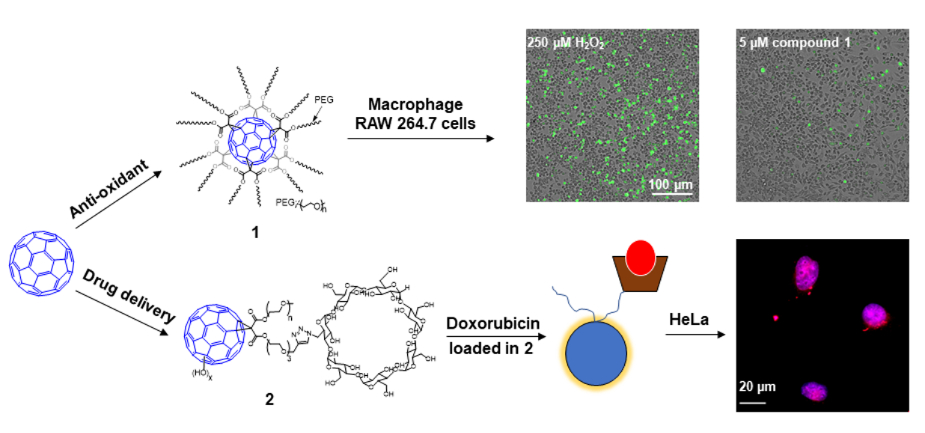Functionalized water-soluble fullerene derivatives can aggregate to form nanoparticles that have been used for biomedical applications such as drug delivery vehicles and anti-oxidants. Surface functionalized fullerene nanoparticles are known to be efficient quenchers of reactive oxygen species (ROS) such as hydroxyl radical. Some of these nanoparticles have been shown to exhibit anti-inflammatory behavior in macrophage RAW 264.7 cells by suppressing the expression level of pro-inflammatory genes like TNF-α and IL-6. Although it is speculated that this anti-inflammatory behavior is linked to the anti-oxidative activity of these derivatives, yet this is not clearly understood. In this study, we have synthesized several water-soluble C
60 derivatives and studied their structure-property relationship w.r.t. the anti-oxidative behavior. Here we show that some newly synthesized C
60 nanomaterials showed high anti-oxidant activity as demonstrated by anti-oxidant assay, electron paramagnetic resonance (EPR) and fluorescence based cellular assays in macrophage RAW 264.7 cells which can be related to the surface functionalization of the cage and the aggregation behavior of these nanomaterials. We also recently demonstrated that a C
60-β-cyclodextrin nanoparticle synthesized in our lab was able to undergo lysosomal escape after endocytosis and penetrate the nucleus of HeLa cells and deliver a high payload of doxorubicin using fluorescence imaging. This behavior was achieved by tuning the surface functionalization of the C
60 cage which led to the nanoparticle being able to adopt dynamic aggregate size in acidic medium. These results open possibilities for developing new fullerene based nanomaterials to suppress oxidative stress and the resultant inflammation that can be caused by it as well as deliver small molecule drugs to specific targets. Currently, we are pursuing the synthesis of new surface functionalized C
60 nanomaterials to install functional molecules including fluorescent tags and biologically important ligands that have potential use as anti-oxidants and delivery systems for small molecule drugs. This presentation will highlight some of our pursuits in these directions.



